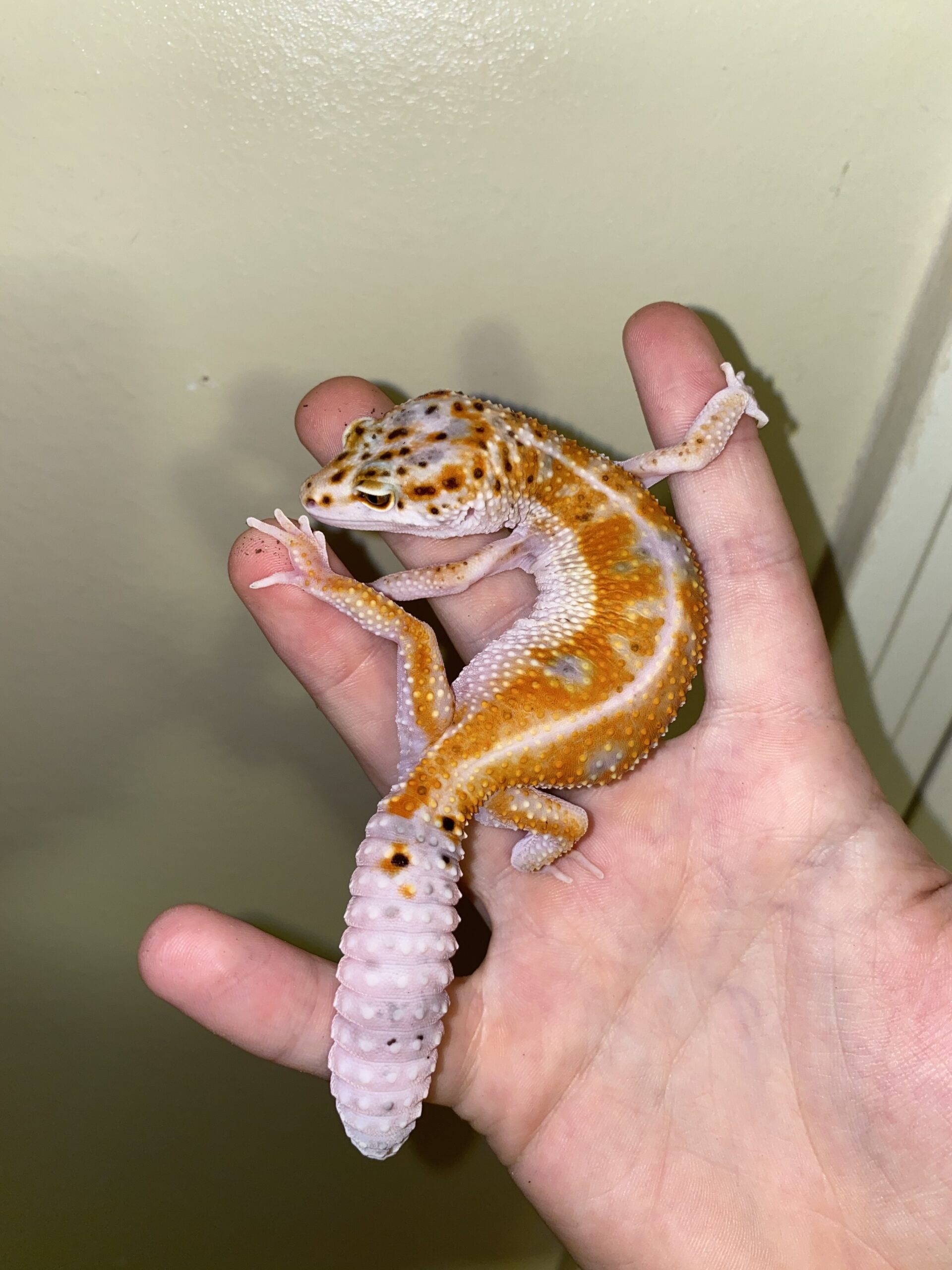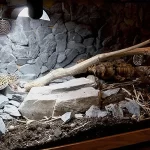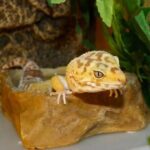When it comes to breeding leopard geckos, one of the most important factors is providing the proper incubation temperature for the eggs. Getting this right is crucial for ensuring the eggs hatch properly and the hatchlings develop normally. In this article we talk about Leopard Gecko incubation temperature.
Table of Contents
Ideal Incubation Temperature Range
The ideal incubation temperature range for leopard gecko eggs is between 82-88°F (28-31°C). This narrow temperature range provides the optimum conditions for normal embryonic development. Temperatures above or below this range can cause issues:
- Temperatures under 82°F can slow development, increase the chance of birth defects and lower hatch rates.
- Temperatures above 88°F can cause deformities, incomplete egg tooth development, and even embryo death.
So it’s vital to keep the incubation temperatures in the 82-88° degree sweet spot.
Where to Incubate the Eggs
You have a few options on where to incubate leopard gecko eggs:
- Commercial Reptile Egg Incubators: These provide stable temperatures and humidity levels. They’re the easiest but most expensive option.
- DIY Incubators: You can make your own incubator, often from plastic storage tubs. While cheaper, these take more effort to set up and maintain proper conditions.
- In the Gecko Enclosure: Letting the female incubate the eggs in her tank seems natural, but temperatures and humidity fluctuate which can jeopardize the eggs. It’s best to remove the eggs.
Monitoring the Temperature
No matter where you incubate the eggs, monitoring the temperatures is vital. Use a reliable digital thermometer with a probe to track the incubator temperatures. Position the probe right alongside the eggs.
Check the temps at least twice a day – once in the morning and once later in the day. Make any adjustments needed to keep the temperature in that 82-88°F window. Logging the temps each day also lets you ensure stability.
Incubation Duration
At proper incubation temperatures, leopard gecko eggs will hatch after 45-60 days of incubation. Lower temperatures extend incubation, while higher temperatures shorten it. But again, it’s healthiest for hatchlings when incubation lasts 50-60 days at ideal temps.
The Role of Humidity
Humidity levels affect how well the egg shells can “breathe” and release moisture. The right balance helps keep enough moisture inside the egg for development. Recommended humidity levels are between 40-60% during leopard gecko egg incubation.
Hatching Out Baby Leopard Geckos
Toward the end of incubation, the eggs may indent slightly as the hatchlings prepare to emerge. Avoid touching or disturbing the eggs at this point. When they’re ready, the geckos will slit around the egg shell from the inside using their egg tooth.
It’s an amazing process to witness! The little geckos often rest after pipping the shell before completing the exit. The entire hatching process can take 12-48 hours from the initial pip. Don’t interfere unless the hatchling seems to be having serious difficulties emerging.
Caring for Hatchlings
Once out of the egg, leopard gecko hatchlings stay inside the incubator for 24-48 more hours absorbing the last of their yolk sack for needed nutrients. After that, they’re ready for their first shed and to start feeding. They’ll need very small live feeder insects.
It’s ideal to house hatchlings together at first. But monitor them closely for any signs of aggression or dominance issues. Be prepared to separate any geckos not thriving together. With good care and proper setups, hatchling leopard geckos grow rapidly in their first 12 months.
Incubation Problems and Troubleshooting
Even with excellent incubator conditions, issues occasionally occur during leopard gecko egg incubation:
Non-Viable Eggs Not every egg is fertile and develops an embryo. Clear or misshapen eggs typically won’t hatch. These should be removed promptly from the incubator so they don’t rot and risk contaminating healthy eggs.
Fungal Infections Small gray or black dots on eggs likely indicate fungal growth. While not uncommon, fungus can spread quickly in the warm, humid incubator. Remove any eggs showing substantial fungus right away.
Hatchling Defects Minor physical defects sometimes show up in hatchlings, like missing toes or tail kinks. More severe issues like exposed organs, missing eyes, and undersized heads typically mean non-survival. Defects often result from poor incubation temperatures or genetics.
Stuck Hatchlings If a baby leopard gecko struggles for over 24 hours to fully exit the egg, it may be stuck. At that point, you can carefully assist by softly massaging the egg shell or gently tugging membrane. But take care not to damage delicate bones or tissues.
The Right Start for Healthy Gecko Babies
Caring for developing leopard gecko eggs comes with big responsibility. But the rewards of helping hatch gorgeous, healthy hatchlings makes the effort well worth it! Monitoring incubation temperatures closely and consistently gives every gecko egg its best opportunity to hatch out successfully.





